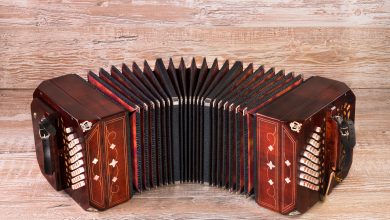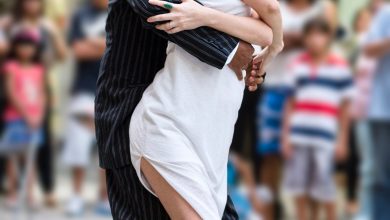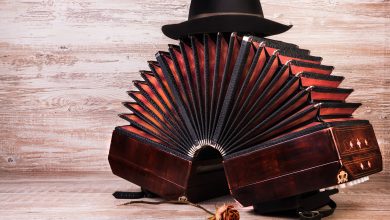The Milonga Dance

The word “Milonga” has two different meanings to argentine tango dancers. The first meaning of the word Milonga is an argentine tango dance party where argentine tango dancers get together to dance with each other. The second meaning of the word Milonga is because the Milonga is one of the three primary rhythms or styles that argentine tango dancers dance to: The first and most well known style is the Tango itself, which is danced to 4/4 time, then there is the Vals, which is danced to 3/4 time, and then there is the Milonga, which is danced to 2/4 time.
Milonga has a strongly accented beat, and sometimes an underlying “habanera” rhythm. Dancers avoid pausing, and often introduce double time steps (called traspiés) into their walks and turns. Milonga dancing uses the same basic elements as tango, with a strong emphasis on the rhythm, and figures that tend to be less complex than some danced in other varieties of tango.
The milonga uses all the steps and techniques of the tango, but it’s usually done in a quick quick rhythm and in a bouncy, swaggery style. The milonga is so historically important that tango dance parties are called milongas and dedicated tango dancers are more often called milonqueros than tangueros.
The Milonga is a happy, high-energy dance. The milonga rhythm originated from the habanera rhythm, is in 2/4 time, and is usually danced faster than tango with less pauses. The Milonga uses a lot of the same steps as tango, but there are certain steps which work particularly well the milonga rhythm. The Milonga dance permits more relaxation of the legs and body than tango. The Milonga typically is danced with a rhythmic walking style without complicated figures, and with a more fun style compared to the serious and dramatic Tango.
There are two distinct styles of Milonga: “Milonga Lisa” (Simple Milonga), where the dancer steps on every beat of the music; and “Milonga con Traspié”, where the dancer uses Traspiés or contrapasos (changes of weight from one foot to the other and back again in double time or three steps in two beats) to interpret the music.
There are certain essentials to performing the basics of the Milonga con Traspie:
- Keep the simple, regular time rhythm of 1, 2, 1, 2 by changing weight. Both the man and woman are responsible for dancing to the rhythm.
- Stay relaxed and try to release any tension in the embrace and in the hips and legs. This helps with quickly switching weight.
- Precise footwork by bringing the feet fully together.
- Mix dancing to the single, regular time rhythm and dancing to a double time rhythm. Dancing double time continuously can look too rushed.
There are certain steps that are the most important steps of the Milonga:
- The box step is the basic pattern used in Milonga and has several variations.
- Another popular step is the zig zag step or “the grapevine.”
- There is the pendulum step.
Because of the speed of the Milonga and therefore its need for smaller steps, milonga is considered more challenging than tango One of the challenges is that it is too easy to abandon technique and just rush the dance because of the need for speed with each step.
Milonga Patterns



